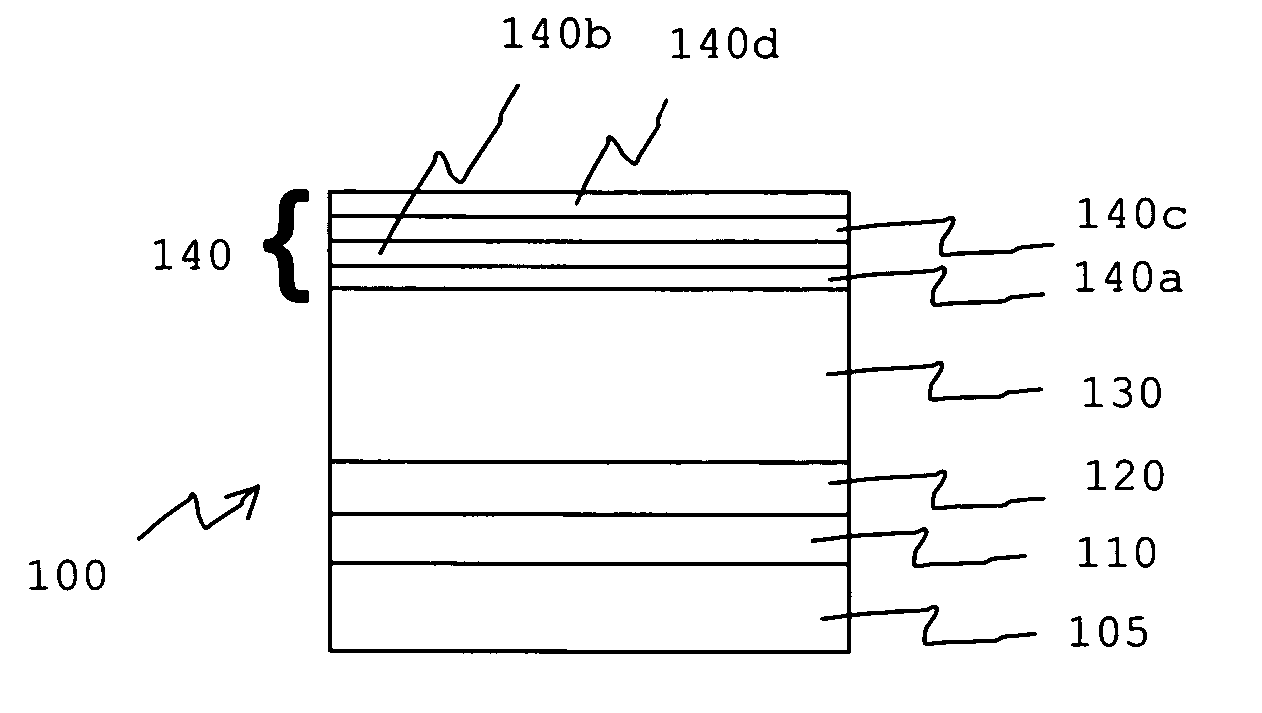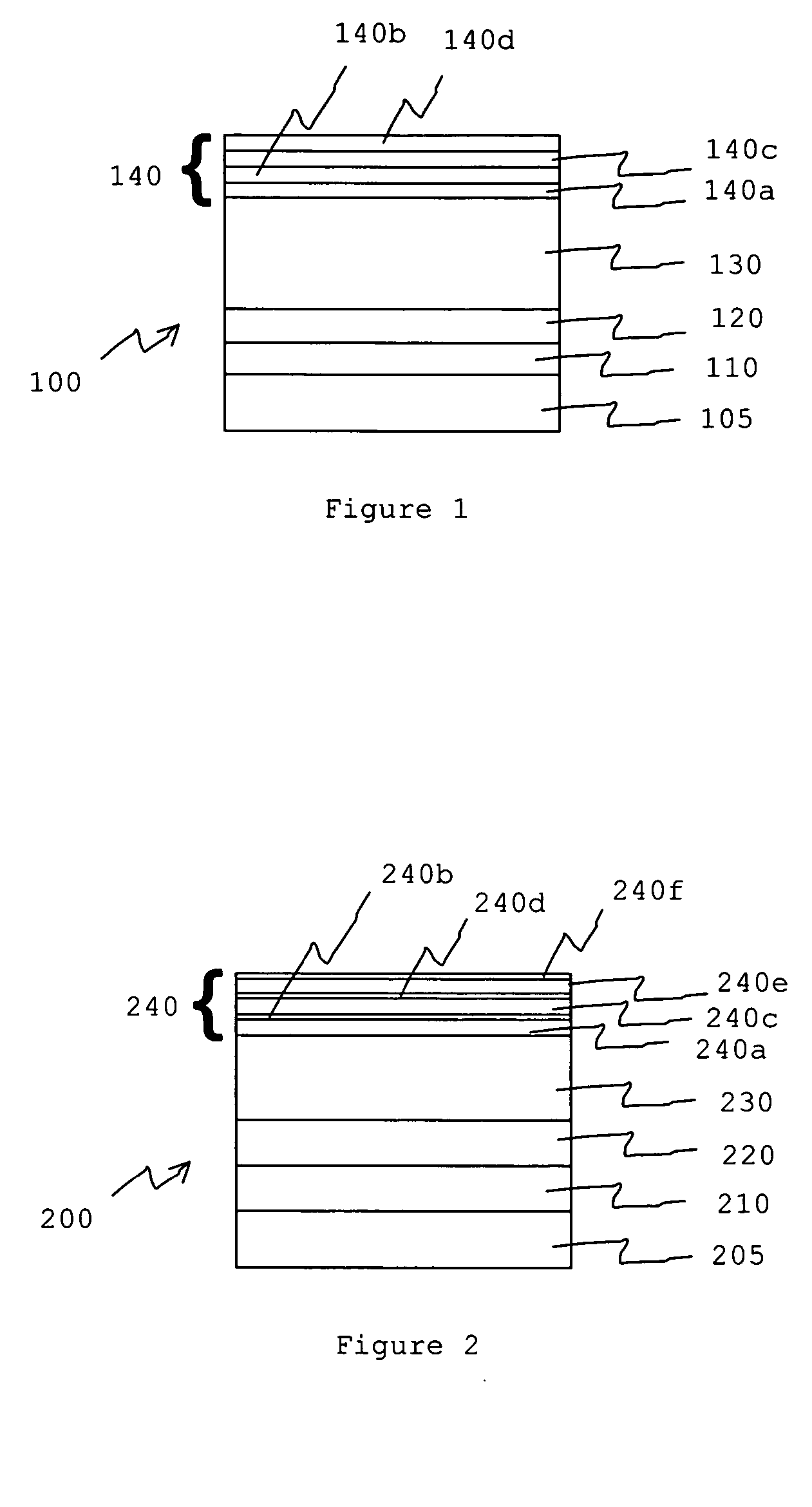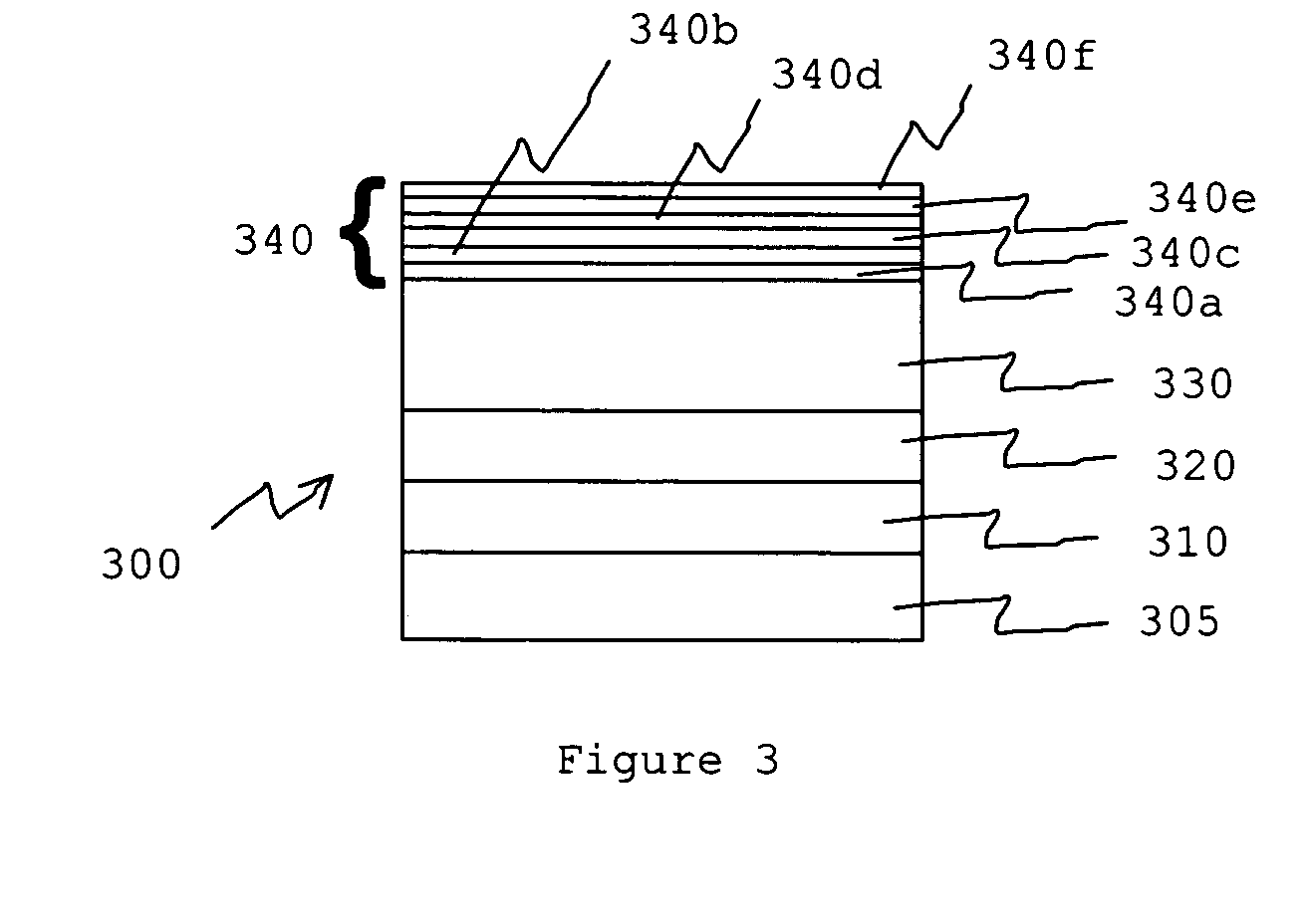Conductive anti-reflection coating
a technology of anti-reflection coating and conductive material, which is applied in the direction of optics, instruments, optical elements, etc., can solve the problems of complex design of conductive anti-reflection layer, large index of refraction of most transparent electrically conductive materials, and often arise design challenges, and achieve low surface contact resistance
- Summary
- Abstract
- Description
- Claims
- Application Information
AI Technical Summary
Benefits of technology
Problems solved by technology
Method used
Image
Examples
example 1
[0062] A 7-layer conductive anti-reflection coating was deposited on a Borofloat™ substrate using vacuum evaporation. More specifically, the layers were deposited according to Table 1, wherein the bottom layer (Layer 1) is in contact with the substrate and the top layer (Layer 7) is in contact with the atmosphere.
TABLE 1LayerThickness / MaterialLayer 76nm ITOLayer 628nm MgF2Layer 56nm ITOLayer 428nm MgF2Layer 3121nm ITOLayer 220nm MgF2Layer 121nm ITO
[0063] Two gold plated thin copper bus bars were bonded to the surface of the anti-reflection coating with an ACF. The measured sheet resistance was 14 ohms / square, while the surface contact resistance was about 0.24 ohms per bus bar. Notably, this surface contact resistance is sufficiently low to support EMI shielding applications.
example 2
[0064] A 9-layer conductive anti-reflection coating was deposited on a Borofloat™ substrate using vacuum evaporation. More specifically, the layers were deposited according to Table 2, wherein the bottom layer (Layer 1) is in contact with the substrate and the top layer (Layer 9) is in contact with the atmosphere.
TABLE 2LayerThickness / MaterialLayer 96nm ITOLayer 814nm MgF2Layer 76nm ITOLayer 614nm MgF2Layer 56nm ITOLayer 414nm MgF2Layer 3121nm ITOLayer 220nm MgF2Layer 121nm ITO
[0065] Two gold plated thin copper bus bars were bonded to the surface of the anti-reflection coating with an ACF. The measured sheet resistance was 14 ohms / square, while the surface contact resistance was unmeasurable. Notably, this surface contact resistance is low enough to support electrical current flow in thin film resistive heaters.
example 3
[0066] A 9-layer conductive anti-reflection coating was deposited on a Borofloat™ substrate using vacuum evaporation. More specifically, the layers were deposited according to Table 3, wherein the bottom layer (Layer 1) is in contact with the substrate and the top layer (Layer 9) is in contact with the atmosphere.
TABLE 3LayerThickness / MaterialLayer 95nm ITOLayer 818nm MgF2Layer 75nm ITOLayer 618nm MgF2Layer 55nm ITOLayer 418nm MgF2Layer 3121nm ITOLayer 220nm MgF2Layer 121nm ITO
[0067] Two gold plated thin copper bus bars were bonded to the surface of the anti-reflection coating with an ACF. The measured sheet resistance was 19 ohms / square, while the surface contact resistance was unmeasurable. Notably, this arrangement was designed to minimize reflectance with respect to the anti-reflection coating shown in Example 2. In particular, the ITO layers are thinner and the MgF2 layers are thicker. Although there was an increase in the sheet resistance, due to less conductive material, th...
PUM
| Property | Measurement | Unit |
|---|---|---|
| thickness | aaaaa | aaaaa |
| thickness | aaaaa | aaaaa |
| thick | aaaaa | aaaaa |
Abstract
Description
Claims
Application Information
 Login to View More
Login to View More - R&D
- Intellectual Property
- Life Sciences
- Materials
- Tech Scout
- Unparalleled Data Quality
- Higher Quality Content
- 60% Fewer Hallucinations
Browse by: Latest US Patents, China's latest patents, Technical Efficacy Thesaurus, Application Domain, Technology Topic, Popular Technical Reports.
© 2025 PatSnap. All rights reserved.Legal|Privacy policy|Modern Slavery Act Transparency Statement|Sitemap|About US| Contact US: help@patsnap.com



